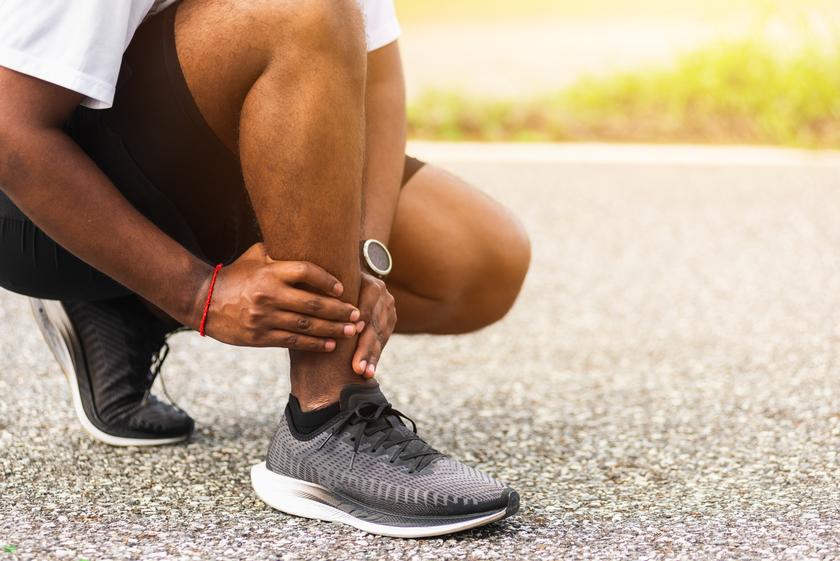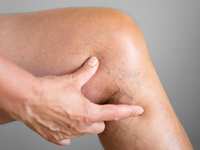Achilles Tendonitis: Why You Shouldn't Ignore Achilles Tendon Pain & What to Do About It

If you're a frequent exerciser, pain likely isn't a foreign concept to you. Achy knees, tight calves, hamstring soreness that goes on for days — you've likely dealt with (and exercised through) it all.
But when is pain just a part of exercise and when is it a sign of something more concerning, like an underlying problem that could lead to serious injury?
"Injuries are sometimes subtle, but more often than not, they're associated with sharp, noticeable pain of sudden onset," says Dr. David Michael Wallace, a sports medicine doctor at Houston Methodist. "It's never a good idea to ignore this type of pain since that can lead to further damage and even a devastating injury, like a tear or rupture."
If it's pain just above your heel, Achilles tendonitis becomes the concern — an injury that's totally treatable, with the right guidance.
"The most important thing to know is that continuing to exercise with untreated Achilles tendonitis can lead to Achilles tendon rupture, which almost always requires surgery," warns Dr. Wallace.
It's why identifying and managing Achilles tendonitis is key to staying active in the long run.
What causes Achilles tendonitis?
The Achilles tendon connects your calf muscle to your heel bone. A tough, fibrous band of tissue at the base of your leg that's responsible for helping you stand, walk, run and jump, it's the strongest tendon in your body. That said, it's not impervious to injury.
Achilles tendon pain is often due to tendonitis, inflammation and irritation that occurs when the tendon gets overly stressed.
"Achilles tendonitis is largely an overuse injury, occurring if you ramp up exercise too quickly," says Dr. Wallace. "It can also be caused by tight or strained calf muscles, poor-fitting shoes and an inadequate warm-up routine."
It's a common injury in runners, as well as in sports that require a lot of running, jumping, and quick starting and stopping, like football, basketball and soccer. The injury isn't specific to exercise, though. Anyone whose job keeps them on their feet might be at risk for experiencing Achilles tendonitis.
What does Achilles tendonitis feel like?
The signs of Achilles tendonitis include:
- Pain in your lower leg just above the heel, typically the day after a workout or while climbing stairs
- Restricted motion while attempting to lift your toes upwards and toward your shin
- Achilles tendon swelling or warmth (indicators of inflammation)
"If you notice these signs, consult a sports medicine doctor," recommends Dr. Wallace. "There are many different strategies we can consider to treat Achilles tendonitis. In addition, your doctor will help you understand the severity of your tendonitis and how you need to adjust your exercise plan in the meantime."
How is Achilles tendonitis treated?
Achilles tendonitis typically improves with rest. Yes, even if working out is the highlight of your day, you'll need to give the tendon some rest. You'll also need to consult a doctor about how it should be treated.
Depending on severity, Achilles tendonitis treatment options may include:
- RICE (rest, ice, compression and elevation)
- Calf stretches and other exercises you can do at home
- Physical therapy
- Swapping high-impact activities (ones involving running and jumping) for low-impact alternatives for a few weeks
- Slowly incorporating running and jumping back into your routine, wearing compression sleeves or tape to support your tendon
- Icing the tendon after exercise
- Implementing a tailored stretch and foam roll program
"The goal is to give the tendon time to heal and prevent the issue from developing into tendinosis, which is when the tendon begins to break down due to continued trauma," explains Dr. Wallace. "Without rest and treatment, the risk of rupture increases."
Again, a ruptured Achilles is a devastating injury that almost always requires surgery. The injury also comes with a fairly lengthy rehab process. Ruptured Achilles recovery can take anywhere between six months to a full year — with about four months to resume normal activities and sometimes requiring physical therapy for up to a year.
By: Katie McCallum

















